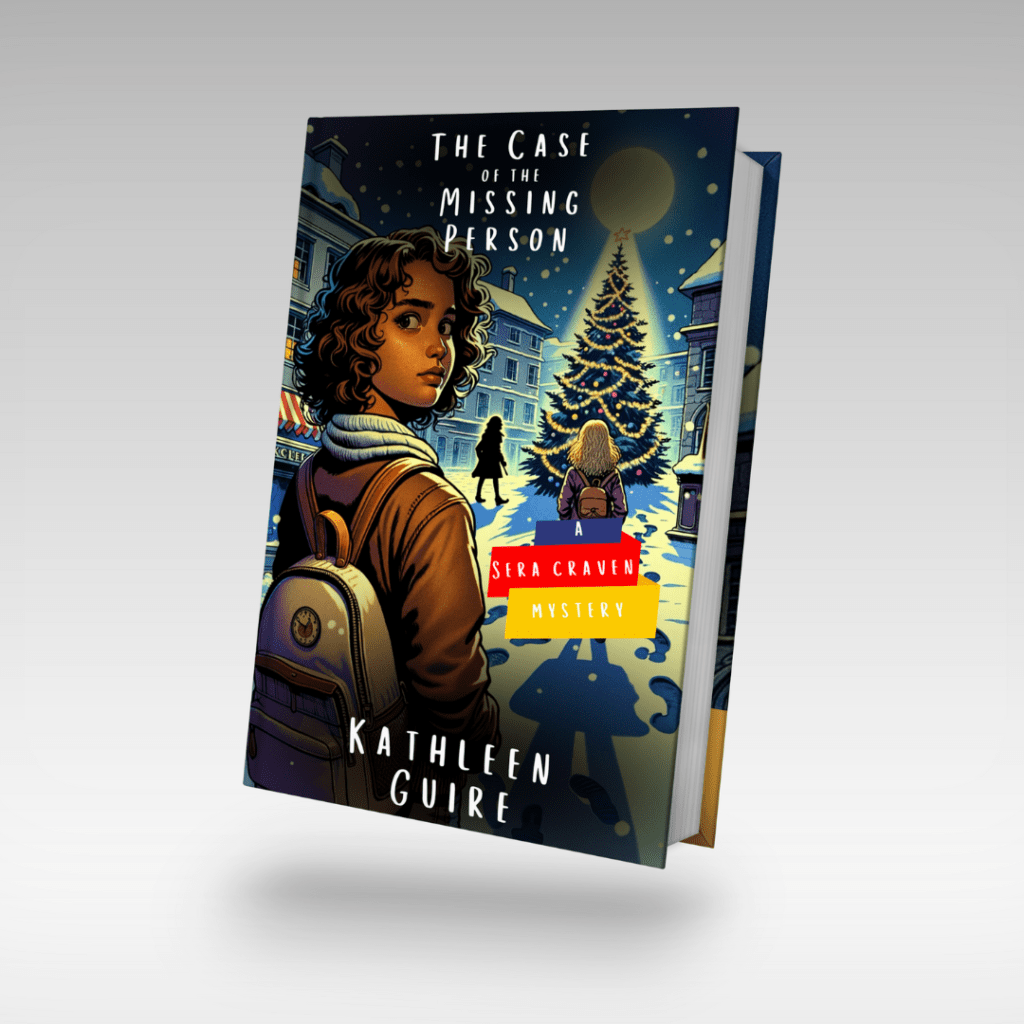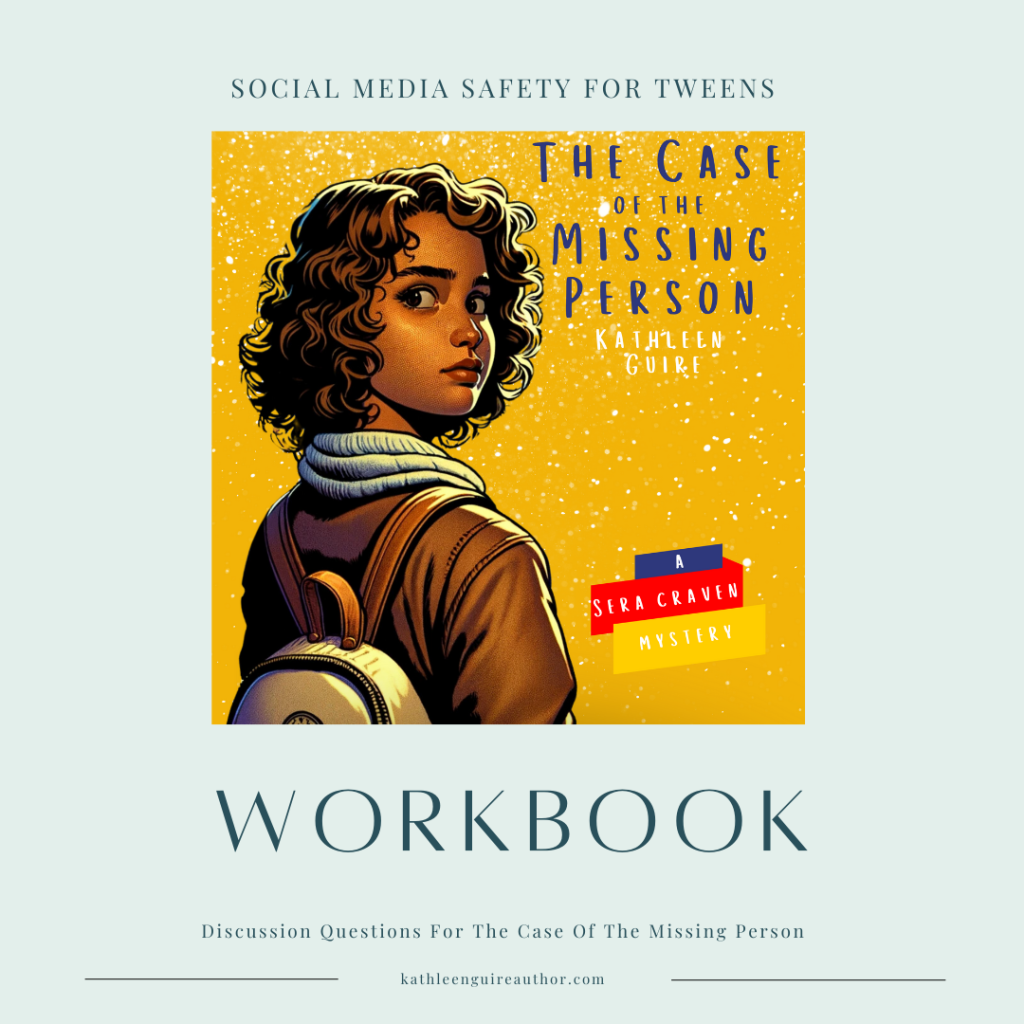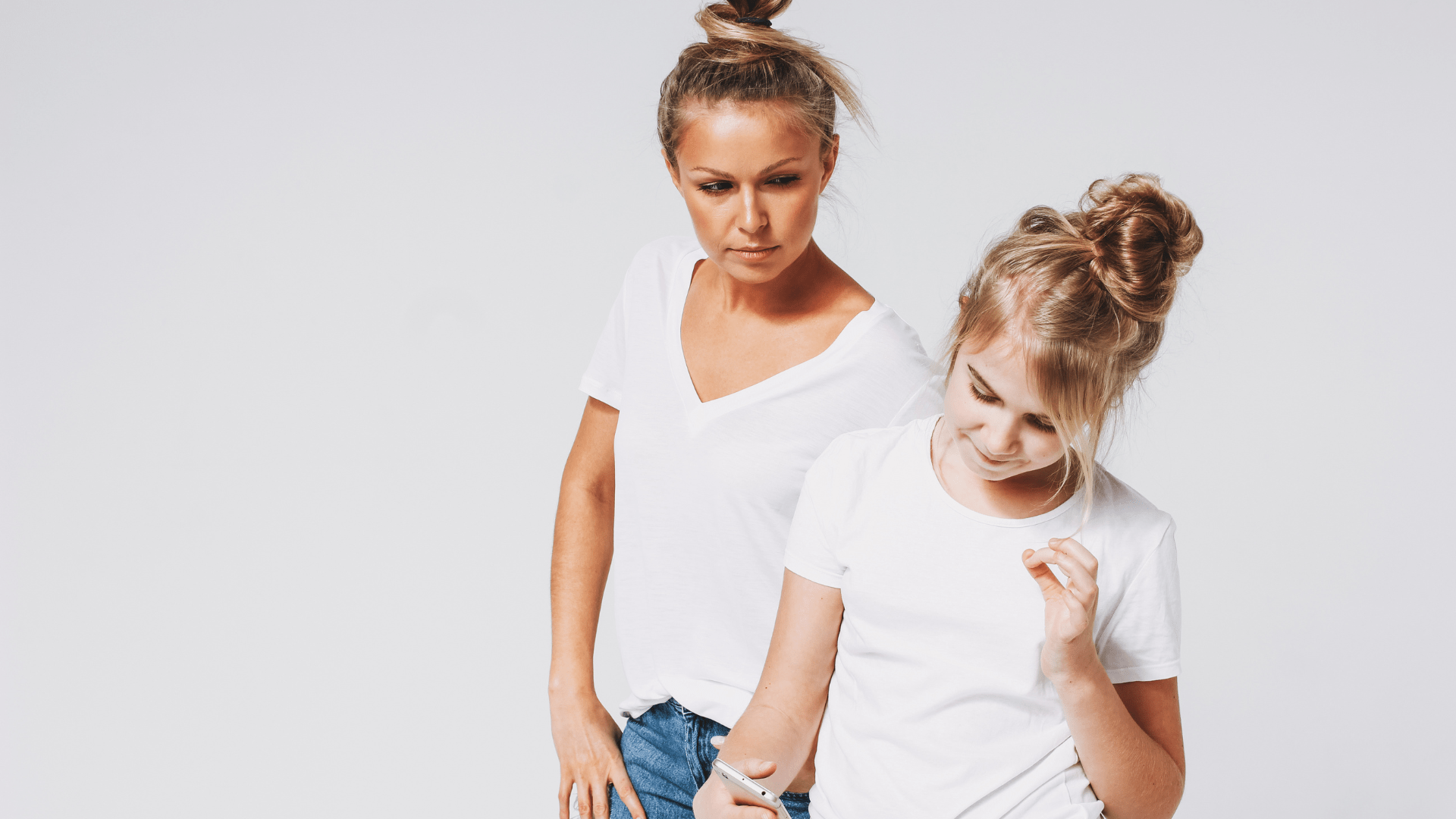6 Tips For Teaching Social Media Safety (With A Tween Novel)
Teaching Social Safety Media With A Tween Novel – The Case Of The Missing Person
While I know today kids think that owning a device and having social media accounts is a right, not a privilege. It’s our job as parents to set limits to make sure our kids are emotionally mature enough to navigate having a device.
The truth is lots of damage has been done to kiddos seeking connection, comfort, and encouragement on social media.
Everyone wants their child to practice social media safety but how do you teach it?
Sitting your kids down for a frank discussion about it is one option and one I’ve used myself.
But there is an additional way you can open the conversation. Through a novel.
Really? Yep. You can read a tween novel with your tween and follow the instructions in a free pdf – Social Media Safety which you can grab HERE.
New From Kathleen
A New Family. A Missing Friend. A Dark Secret.
She finally has a family. Only one thing is missing -the friend who left her behind in the Colombian orphanage. Can Sera find her?
This Nancy Drew loving tween and her new friend Mandy are itching to solve a mystery. But when Sera uses social media to track down her friend, she may get herself into more trouble than she can handle.
.

6 Tips For Teaching Social Media Safety
*Use these six tips to help you teach social media safety even if you don’t buy my book!

Ask your child if they know what a bad guy looks like. Of course we know that bad guys aren’t characterized by looks, but it’s a place to start the conversation.
Sera believes she can distinguish “bad guys” through physical characteristics. She gathers her list from a Nancy Drew book.
Might belie a villain:
- A large or hooked nose
- A severe square-jawed face
- Wild bushy or coarse stiff hair
- Shifty, dark, sharp, piercing, narrow or penetrating eyes
- Ill-fitting clothes
- A flashy or boldly-patterned suit–especially loud plaids–and a gaudy necktie
Where does your child get her/his bad guy characteristics? Have you asked them?
When I worked with S.H.I.E.L.D. Task Force, our founder and resident attorney often did presentations on what a sexual abuser looks like. On the screen he showed pictures of men and women and asked the audience to choose which one they thought was a good guy and which was a bad guy. Without fail, the audience chose the good looking, clean cut guy as the good guy and the characteristics (in a modern version) of “might belie a villain” to choose bad guys. When the adult audience, consisting of teachers, counselors, and other school staff, chose the clean cut guy, Robert read off that guy’s perpetrator list.

Talk to your child about proper social media safety.
While I know today kids think that owning a device and having social media accounts is a right, not a privilege. It’s our job as parents to set limits to have what everyone else has to make sure our kids are emotionally mature enough to navigate having a device. Honestly, after reading comments on social media on hot topics I don’t know if some adults are mature enough, but that’s a topic for another time.

Assume your child knows nothing.
I have two-year-old grandkids who can log onto an Ipad and find their favorite show faster than I can. That’s not a sign of maturity and intelligence. I can still remember my phone number from middle school and dial it on a rotary phone in a hurry if I need to. So when it comes to navigating social media platforms, which by the way, I would not let said two-year old do, having a session on how to is a great plus. Even if the child scowls and tells you all their friends are on that platform. The truth is lots of damage has been done to kiddos seeking comfort and encouragement on social media. And as I said earlier, it’s a right, not a privilege.
Sera messages random people on social media in hopes of finding some information about her friend who left her behind in the Colombian orphanage.
“Nine of the ten people said, “No, sorry.” One of the nine said, “Do your parents know you are messaging strangers?” I told her not to worry because she didn’t fit the bad person criteria. She messaged me with a funny face and said, be careful.
I received a message from a guy who might have some information. Can you give me more details about Isabella and you? I knew he was a good guy. In his selfie, he was smiling and handsome. His eyes were bright blue and his teeth straight and white. Those were always good guy markers. I explained to him how Isabella and I were both in the orphanage together. He said he would get back to me.
I stashed the Kindle and brought out my mystery board. I wrote on a Post-it note: Possible clue from Derrick.

Set limits and take control.
You already know my opinion about kiddos having the “right” to devices. You’re the parent. When you set a limit, stick to it. Sometimes I think parents have bought the lie that devices and social media are great babysitters. No judgment here. Sometimes moms need kids to play a game on their Ipad so Mom can get the dishes washed and dinner on the table. Get some controls to manage your child’s devices. I’ve listed some in the resources. I had a conversation with my five-year-old grandson about controls on his IPad while kayaking with him (In my kayak). How does my IPad know how old I am?
Mom and Dad plugged that in.
When will they change it?
When you’re older.
When can I do the 18 plus stuff?
When you’re older.
What about Dom? (His younger brother) Does it know he is just two?
Yes.
How?
And the conversation continued with bits of ghost buster facts and how his brother is addicted to Miss Rachel.
You can set limits with timers and parental controls.

Take the spotlight off your child
While some kids are natural conversationalists, others need a springboard to get them started. A book is a great springboard. When your child reads a book, and you talk about the main character, you take the spotlight off of your child. Instead of saying “Don’t message random strangers on social media.” You can say, “What do you think of Sera hiding in her room and messaging strangers?”
Instead of saying, “Some people you message on social media aren’t who you think they are,” to which your tween may respond, “Mom, I’m not stupid,” or something to that effect. You can ask – Do you think Derrick is who he says he is?

Spend time talking to your children and listening to them to fill their emotional tank.
This is the last and most important of my points. Honestly you can do this one and all of the other points you need to discuss will happen without you bringing them up.
In today’s busy world, we often set talking for no reason aside. We don’t think of it as essential all the while we know the most basic human need is connection. Our kids long to be valued, to be connected to us. If they don’t feel connected to and valued by us they will seek it elsewhere.
Social Media Safety And Trauma Histories And/Or Neurodiversity
Just a quick point, if you’re raising a kiddo with a trauma history and/or neurodiversity, even if you spend hours listening to and talking to them, they are more likely to succumb to the dangers of social media.
- They may be more gullible and trusting.
- They may respect a person before that person earns the respect.
- They may listen to the advice/demands of said respected figure.
- They may not know what is socially acceptable.
- They may not have healthy boundaries.
I’ll give you an example. One of my sons came home after youth one night and looked up porn on my computer because the youth pastor had talked about porn. My son had never looked at porn before that night, but my son didn’t hear the part about the dangers of porn (executive function block) he only heard porn. So he looked it up and then within a few days, two of my boys confessed to looking it up because pastor ___ talked about it.
So warning -expect your kiddos with trauma histories and neurodiversity to be more susceptible online and in person! Don’t make a mountain out of a molehill when they tell you. Talk about it. Set limits on screen time and do whatever fits the personality of that particular child.
Dr. Adam Brown, a clinical assistant professor in the Department of Child and Adolescent Psychiatry at NYU Grossman School of Medicine, says in an article in USA Today:
For those with a history of trauma, social media can lead to very serious issues. “ They can easily be triggered by what they’re seeing and hearing on social media. And it really worries me, the extent to which people may be exposed to things that are triggering them without anyone else around to know or see or help.”
Conclusion
- Ask your child if they know what a bad guy looks like.
- Talk to your child about proper social media safety.
- Assume your child knows nothing.
- Set limits and take control.
- Take the spotlight off your child
- Spend time talking to your children and listening to them to fill their emotional tank.
Grab your copy of The Case of the Missing Person today. I promise you it is a fun and easy read. It’s not dark. There are no curse words or graphic scenes. As far as the social media safety conversation goes, you can go as deep as you want or simply read the book and skim the topic. You’re the parent. It’s up to you.
Need some help? I’ve created a free pdf to help you start the conversation.

Grab a free workbook!
Social Media Safety for Tweens
Six Tips for Social Media Safety based on the tween mystery novel –The Case of The Missing Person.
A non confrontational approach to teaching social media safety.
Resources:
Free Pdf Social Media Safety
Kids’ Online Safety: My 3 top tips by Diane Tarantini
pin it:


